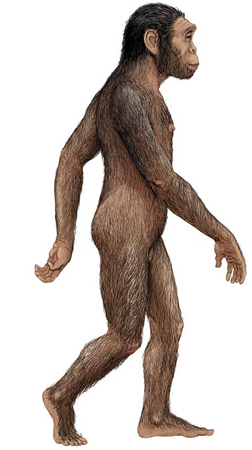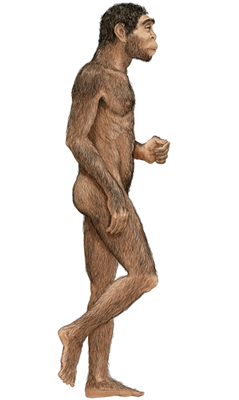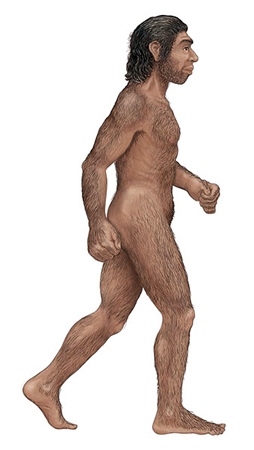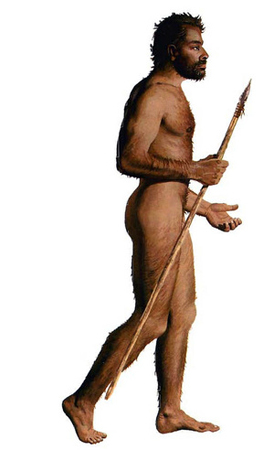The Evolution
About 2 million years ago, a new group of species evolved from australopithecines. They are known as Homo habilis.

They are the first members or ancestors of the genus group Homo which modern day humans belong to. It was the first to use tools. It was small in stature but the brain was about 45% larger than its predecessor (it was 700cc in volume). Its skull is positioned in line with a more upright vertebral column. Homo habilis still ate fruits and other plant materials. There was division of labour with some members serving as hunters whiles others as gatherers. They mostly share their food and ate together. It is believed that society and culture begun this way.
The second species of the genus Homo to have evolved is the Homo erectus.

These species appeared in Africa about 1.7 million years ago and migrated into Asia as well as Europe. Homo erectus is the first hominid to use fire and also make more advanced tools. They had brains that were roughly twice as large as their ancestors. They had a large brow ridge and face that was almost flat.
The first appearance of the species of modern day humans lived at about 500,000 years ago. These species are known as Homo sapiens. They emerged from Africa and migrated to all parts of the world while dominating the Homo erectus populations. The earliest populations of Homo sapiens are called Neanderthals.

They were abundant in Europe and Asia. They were short and stocky. Their skulls were massive with protruding faces, projecting noses and had heavy bony ridges over the eye brows. They lived in hut-like structures or in caves. They were later on replaced by people of modern character who are known as Cro-Magnons.

They used sophisticated stone tools that were more diverse and more useful. Humans of modern appearance eventually spread across Siberia to North America. They became scattered throughout the world.